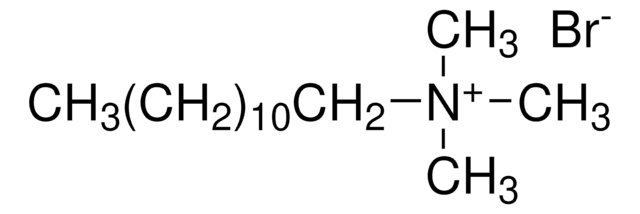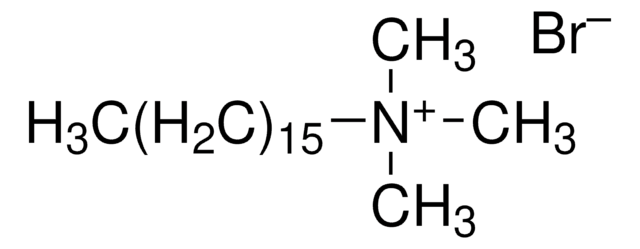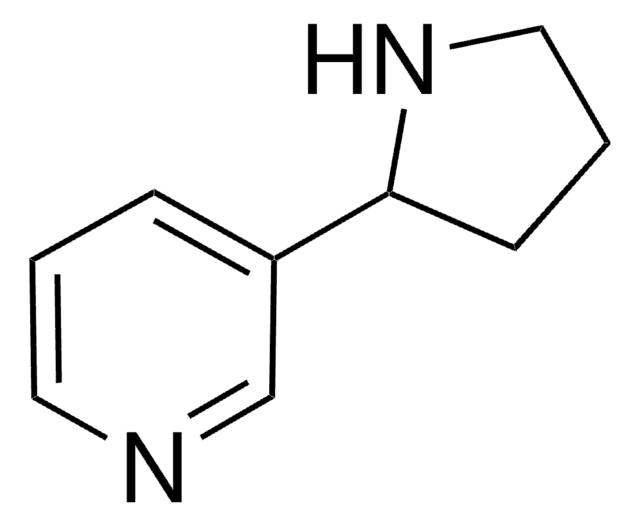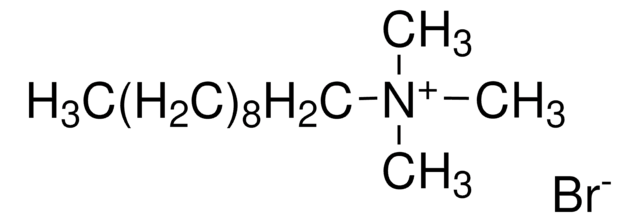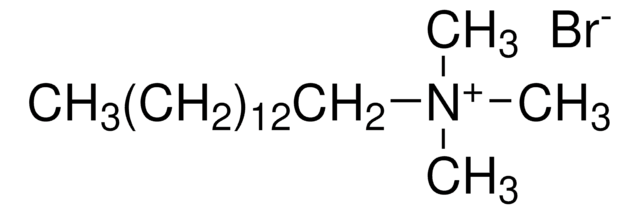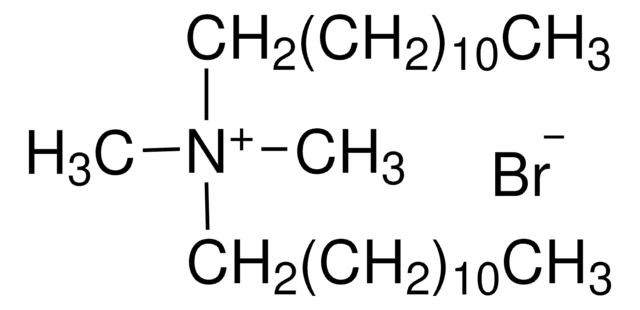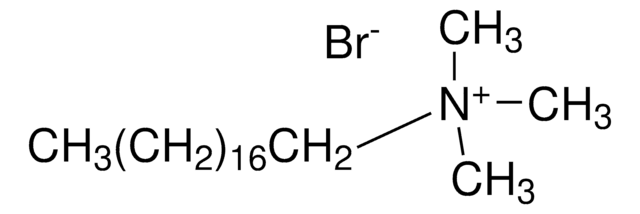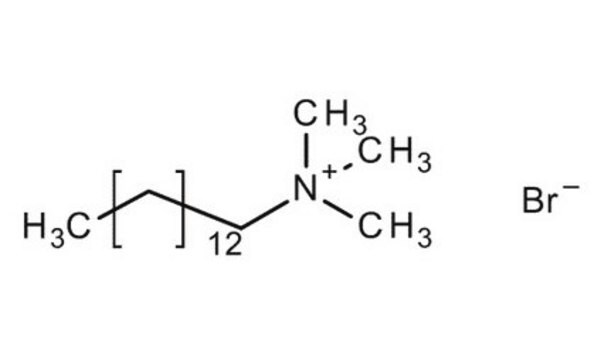D5047
Dodecyltrimethylammonium bromide
BioXtra, ~99%
Sinonimo/i:
Lauryltrimethylammonium bromide
About This Item
Prodotti consigliati
Descrizione
cationic
Livello qualitativo
Nome Commerciale
BioXtra
Saggio
~99%
Stato
crystals
PM
308.34 g/mol
Impurezze
<0.001% Phosphorus (P)
<0.1% Insoluble matter
Residuo alla calcinazione
<0.1%
Punto di fusione
246 °C (dec.) (lit.)
Solubilità
H2O: 0.1 M at 20 °C, clear, colorless
Anioni in tracce
sulfate (SO42-): <0.05%
Cationi in tracce
Al: <0.0005%
Ca: <0.0005%
Cu: <0.0005%
Fe: <0.002%
K: <0.005%
Mg: <0.0005%
NH4+: <0.1%
Na: <0.005%
Pb: <0.001%
Zn: <0.0005%
Stringa SMILE
[Br-].CCCCCCCCCCCC[N+](C)(C)C
InChI
1S/C15H34N.BrH/c1-5-6-7-8-9-10-11-12-13-14-15-16(2,3)4;/h5-15H2,1-4H3;1H/q+1;/p-1
XJWSAJYUBXQQDR-UHFFFAOYSA-M
Cerchi prodotti simili? Visita Guida al confronto tra prodotti
Descrizione generale
Applicazioni
Avvertenze
Danger
Indicazioni di pericolo
Consigli di prudenza
Classi di pericolo
Acute Tox. 3 Oral - Aquatic Acute 1 - Aquatic Chronic 1 - Eye Irrit. 2 - Skin Irrit. 2
Codice della classe di stoccaggio
6.1C - Combustible acute toxic Cat.3 / toxic compounds or compounds which causing chronic effects
Classe di pericolosità dell'acqua (WGK)
WGK 3
Punto d’infiammabilità (°F)
Not applicable
Punto d’infiammabilità (°C)
Not applicable
Dispositivi di protezione individuale
dust mask type N95 (US), Eyeshields, Gloves
Scegli una delle versioni più recenti:
Possiedi già questo prodotto?
I documenti relativi ai prodotti acquistati recentemente sono disponibili nell’Archivio dei documenti.
I clienti hanno visto anche
Il team dei nostri ricercatori vanta grande esperienza in tutte le aree della ricerca quali Life Science, scienza dei materiali, sintesi chimica, cromatografia, discipline analitiche, ecc..
Contatta l'Assistenza Tecnica.